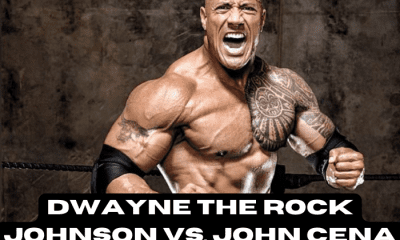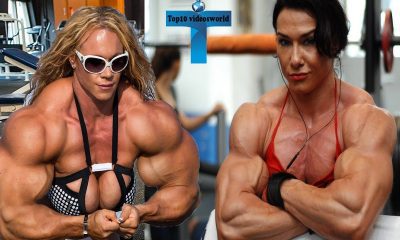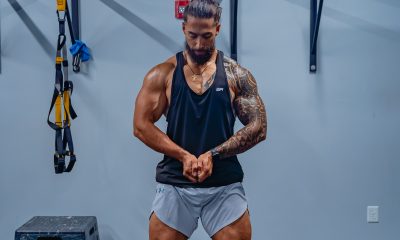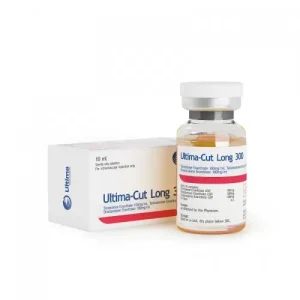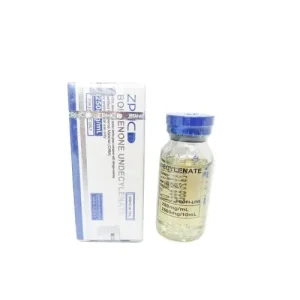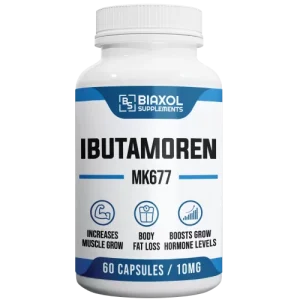Bodybuilding
Vitamin D Benefits For Bodybuilders
Every bodybuilder works hard in the gym day by day to get an increase in muscle mass and strength. Despite they put big efforts in reaching this goal, many of them are far from that ideal body look even after many months of heavy training. There is much reason for this, but one which is very often ignored by almost all bodybuilders is the Vitamin D benefits for their body.
Vitamin D Benefits for Bodybuilders
Many bodybuilders, especially novice one tend to pay a big attention to what type of training to choose, how many sets and reps to do, how often should they work out, what protein supplements to choose, what diet to follow, while namely the necessity of vitamin D benefits for people who want to build up big muscle and high strength is a less discussed subject.
And this is not the way it should be. As vitamin D in your body determine the level of testosterone, libido, and other highly important functions of your body. In this article, you will find out in detail why it is so important to take care of Vitamin D level, what is its role and what happens in case of its lack or excess use.
What is Vitamin D?
In the beginning, let’s understand what is vitamin D and why our body needs it. Vitamin D is a fat-soluble vitamin. It can be found in some type of food, but mostly it is synthesized by exposing the body to the sun. It is responsible for bone health, and help the absorption of calcium and phosphorus from the food you eat.
Until this moment there is nothing special that can rock you since Vitamin D seems necessary for all people, and you do not see its importance especially for bodybuilders. But here is why: there have been done some researches meant to show the importance of vitamin D on testosterone production and muscle strength. It was proven D is not a simple vitamin that influences these indicators, it should be seen, in the chemical sense, as a steroid hormone.
The main way to get Vitamin D is to expose your body to sunlight. Our skin is rich in provitamin D, which is activated by sunlight. Most of the people get 90-95% of the daily dose of vitamin D from sunlight. Also, it can be found in some food like oily fish, eggs yolk, milk.
Must Read: 4 Best Multivitamins for Athletes
But you have not to rely on food only, as it contains very small doses of vitamin D, which is insufficient for your body. Sunlight exposure is also avoided by many people, go shift toward a Vitamin D supplements. This happens because of concerns about skin cancer, the specific of nowadays lifestyle and easiness of getting vitamin D from supplements.
Vitamin D Benefit For Increasing Muscle Strength

As we said, vitamin D get converted in our body to a steroid hormone called 1,25-dihydroxy vitamin D. This type of vitamin D increase muscle strength through its action on muscle cells protein synthesis and cell growth. Another study done back in 200 has shown that people with low level of vitamin D, has the higher level of muscle fat.
This percentage even higher than 20. In fact, the higher is the level of fat, the lower is the muscle strength ability, since muscle is composed of more fat than muscle tissue. During the same study was observed that people with vitamin D deficiency has a higher level of under skin fat or also called subcutaneous fat and abdominal fat. Thus, it comes clear that if you want to get rid of excess fat and get a shredded look you have to keep your vitamin D level at the normal or even a bit higher.
For people who participate in bodybuilding competitions, this is especially important. They need to make sure their vitamin D level is topped up during the drying stage, as this will help them, along with right diet and training, get ripped and cut.
Click Here to Check Price of Vitamin D
Vitamin D Increase Testosterone Level

The end form of Vitamin D -1,25- dihydroxy vitamin D- influence the level of testosterone and reduce the level of estrogen in men. In order to prove it, there have been done some researches (Horm Metab Res. 2011). During one year a group of men took 83 µg of vitamin D. During the same period, was created a placebo group. As a result, in case Vitamin D supplemented was observed a significant increase of testosterone level. Contrary, in the placebo group there was no modification of testosterone measure.
As you know testosterone has the great anabolic effect. Every bodybuilder who want to get bigger and stronger look to get this effect in all ways possible. One of this is supplementation with vitamin D. Regardless of the way you choose to get it- supplementation or sunlight exposure- you have just to remember all the time that it helps you to increase testosterone level and to reduce estrogen.
Click Here to Know More About Vitamin D
Vitamin D Positively Affects Fertility

Since vitamin D greatly influence testosterone level, is not a surprise that it has benefits for other male characteristics. One of the is male fertility. A research done by the European Journal of Endocrinology has shown that vitamin D is very important for the development of sperm cells. Also, since Vitamin D has great effects on the testosterone level, it increases libido too. Women fertility is also positively influenced by the use of vitamin D.
Checking Your Vitamin D Levels
Bodybuilders have always to check their vitamin D level as its deficiency means that you will not be able to take advantages of all mentioned above. Bone pain, skeletal malformations, muscle cramps are signs of severe deficiency of vitamin D. Also, among the most dangerous side effects of vitamin D deficiency is osteoporosis disease, which may cause bone breaks.
Among the most common risk factors for vitamin D deficiency are dark skin, old age, unexposed skin to sunlight, overweighting, and others. If you live in northern countries, then there is absolutely need to supplement you with vitamin D. However, the best advice is to visit your doctor before taking any vitamin at all.
Consult Your Doctor
The doctor will recommend the best dose of vitamin D after a blood test. Do not get involved in taking vitamin D without consulting your doctor, as vitamin D excess is dangerous for your body. It may cause calcification of soft tissues. Usually, there are no toxicity cases related to vitamin D excess use. Just follow the recommended doses and not for a very long time.
Read More: Micronutrients for Bodybuilding – Water and Vitamins
Usually, the recommended dose of vitamin D supplementation is about 0.12 mg (400 IU) - 0.18 mg (or 600 IU) daily. Since bodybuilder put their body under big strain, they may increase vitamin D dose 0.24 mg (800 IU). And all this with no risk for their health. Be wise, and do not exceed this threshold, as may occurs serious side effects.
Taking into consideration the big importance of vitamin D use for bodybuilders community was designed a special schedule of vitamin D intake for a year.
A Simple Procedure
-Within the first 4 weeks daily intake of vitamin D is 0.24 mg;
-During the next 8 weeks, the dose should be cut in half. Thus at the end of 8th week, the dose of vitamin D should be 0.12 mg.
-Repeat this cycle throughout the year.
It was observed that during such a cycle increases thirst. This could be helpful especially in the final stage when you need to temper your appetite and use water as a diuretic.
The same pattern of vitamin D is the best choice for those who use creatine. As it is known that, without any side effects that maximize the effect of creatine, an athlete has to drink a lot of water. Vitamin D will serve a great service as a means of causing thirst.
Click Here to Find Out More About and Check Price of Vitamin D
Vitamin D Supplements

There is a wide range of stand-alone vitamin D supplements you can choose from. Also, you can opt for complex vitamins which have in their composition vitamin D too. Not be surprised if you find in some protein powder vitamin D, as many manufacturers include it. And this is a good choice if you take in consideration the anabolic features of vitamin D and the goal of vitamin protein powders.
The quantity of vitamin D in protein powder mixtures is a bit low than in vitamin D tablets. Thus, if your goal is just to maintain your actual vitamin D level than you can choose them. This will be a smart decision. Instead, if you have a deficiency of vitamin D than you have to take vitamin D supplements which contains 1000 IU. The concentration of vitamin D in protein powders is about 200-400 IU.
By Clicking Here you Can Find Out More About Vitamin D
Should Vitamin D Be Taken Alone or it Can Be Stacked With Something Else?
This is a very common question among people who use vitamin D for increasing muscle mass and strength. The answer is yes, you can stack it with calcium, protein powders, and creatine. This will help you to increase muscle strength. Also, You will realize Vitamin D benefits better if you stack it with Tribulus, which is a natural testosterone booster.
Conclusion
Vitamin D is essential for bodybuilders. Since it is not a vitamin, but a hormone, it greatly increases the testosterone level and reduces estrogen. And this leads to muscle growth and strengthening. Also, vitamin D is very effective for burning fat, and thus it can be used to get ripped and cut. Experience vitamin D benefits today by buying associated products on our shop.
Bodybuilding
Optimizing Strength and Recovery: A Guide to Bodybuilding by Body Type
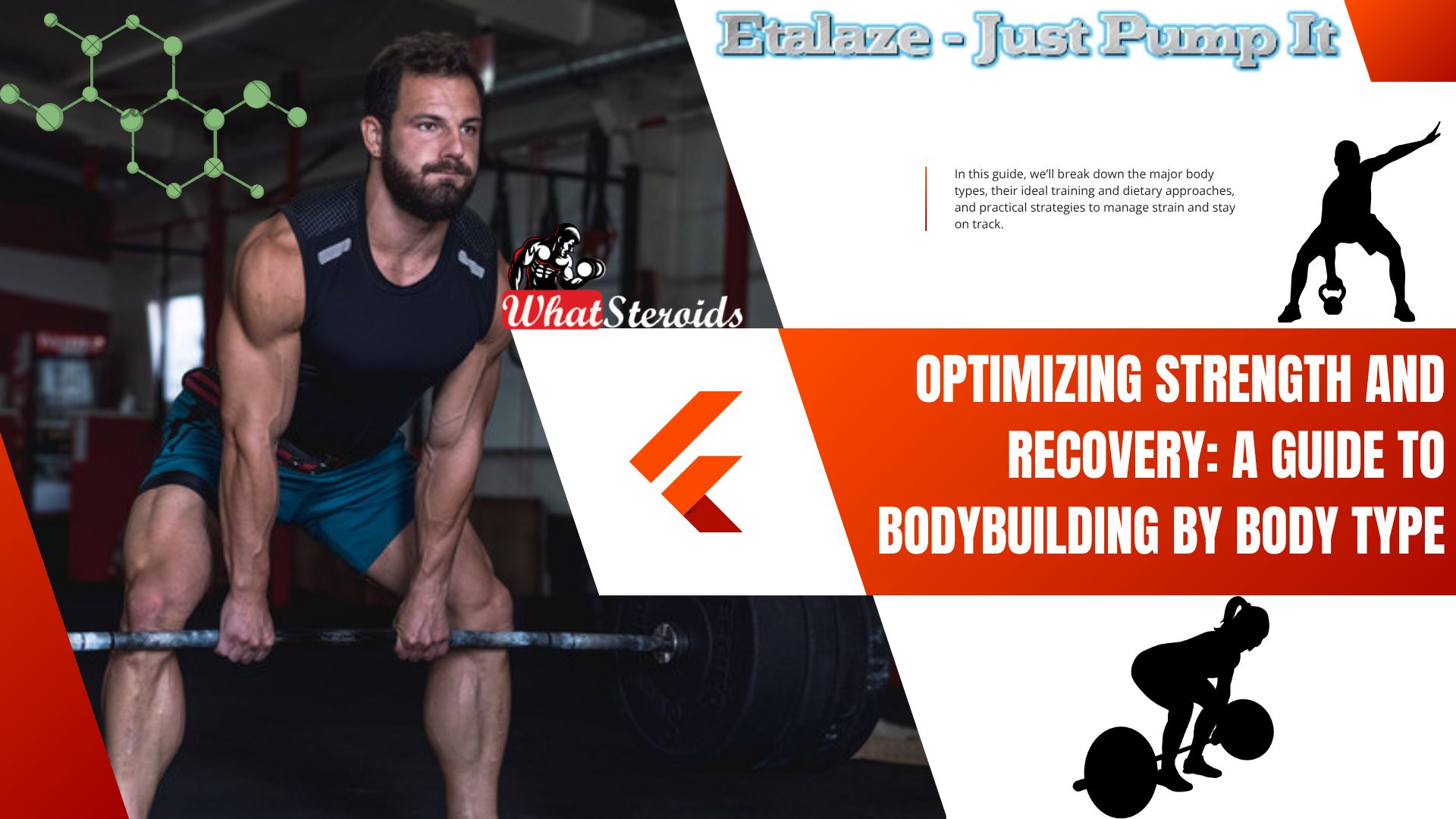
Every body tells a different story—and in bodybuilding, honoring that story is the key to maximizing results. From ectomorphs struggling to pack on mass to endomorphs battling fat retention, training smart means training for your body’s natural tendencies. In this guide, we’ll break down the major body types, their ideal training and dietary approaches, and practical strategies to manage strain and stay on track.
Understanding Your Somatotype
Most people fall somewhere on a spectrum between three classic body types:
1. Ectomorph
Traits: Naturally thin, with a fast metabolism. Gains muscle and fat with difficulty.
Strength Training: Emphasize compound lifts—deadlifts, squats, and presses—with low volume and high intensity. Stick to 3–4 workouts weekly with longer rest intervals.
Reps/Sets: 4–6 reps for 3–5 sets focusing on progressive overload.
Diet: Maintain a high-calorie surplus (15–20% above maintenance) with 50% carbs, 30% protein, and 20% fat. Opt for 5–6 meals daily to maintain an anabolic environment.
Buy Cut Long 300 By Ultima Pharmaceuticals
Recovery Protocol:
Prioritize rest and nutrient-dense intake.
Incorporate creatine, omega-3s, and magnesium.
Minimize cardio to avoid catabolic activity.
2. Mesomorph
Traits: Naturally muscular, moderate metabolism, easily gains muscle.
Strength Training: A hybrid approach with both compound and isolation movements. Train 4–5 times a week.
Reps/Sets: 6–12 reps over 3–4 sets. Include both strength and hypertrophy phases.
Diet: Stay close to maintenance or slight surplus, depending on goal. Use a 40:30:30 macro split (carbs:protein:fat).
Recovery Protocol:
Utilize active recovery days (light cardio, swimming, mobility work).
Schedule deload weeks every 4–6 weeks.
Use massage therapy and contrast showers to reduce soreness.
3. Endomorph
Traits: Broad build, slower metabolism, gains fat easily but also builds strength well.
Strength Training: Opt for metabolic conditioning—supersets, circuits, and high-volume compound lifts. Include 5–6 training sessions per week.
Reps/Sets: 8–15 reps, 3–5 sets to maximize fat oxidation.
Diet: Use a clean-calorie deficit or careful maintenance. Ideal macros: 35% protein, 30% carbs, 35% fat. Emphasize carbs in the morning or post-workout only.
Must Read: Exploring BPC-157 Healing Properties
Recovery Protocol:
Include daily mobility drills and foam rolling.
Use anti-inflammatory nutrients like turmeric, ginger, and omega-3s.
Consider joint support like glucosamine or collagen peptides.
Universal Strategies to Overcome Strain and Fatigue
No matter your build, strain management is key to sustainable progress. Here’s how to recover smarter:
1. Prioritize Quality Sleep
Aim for 7–9 hours of uninterrupted sleep to support hormone regulation and tissue repair.
2. Fuel Recovery with Smart Nutrition
Protein: 1.6–2.2 g/kg body weight daily.
Stay hydrated: Water facilitates nutrient transport and reduces cramping.
Use strategic supplements: Creatine, BCAAs, vitamin D, and magnesium glycinate improve muscle repair and systemic recovery.
3. Use Active Recovery Wisely
Incorporate light movement (e.g., walking, swimming), yoga, or mobility drills to boost blood flow and flexibility.
RICE for Acute Strain
Rest, Ice, Compression, and Elevation—particularly useful within 48 hours of a minor injury.
5. Manage Stress with Breath and Mindfulness
High cortisol impedes recovery. Daily deep breathing, meditation, or cold showers can regulate the nervous system.
Steroid Use by Body Type
Bodybuilders often tailor their choices based on their body type, goals, and tolerance to side effects. Here's a breakdown of commonly used anabolic steroids and how they align with different somatotypes.
Ectomorphs (Hardgainers)
Goal: Maximize muscle mass and strength with minimal fat gain.
Common Steroids:
Dianabol (Methandrostenolone): Rapid mass gain, water retention helps joint support.
Testosterone Enanthate or Cypionate: Foundational for bulking cycles.
Deca-Durabolin (Nandrolone): Promotes joint health and lean mass.
Stacking Strategy: Testosterone + Dianabol + Deca for a classic bulking cycle.
Risks: Estrogenic side effects (bloating, gynecomastia), liver strain (oral compounds).
Buy Boldenone Undecylenate 250mg/ml by ZPHC
Mesomorphs (Naturally Muscular)
Goal: Enhance muscle definition, strength, and vascularity.
Common Steroids:
Testosterone (various esters): Versatile for both bulking and cutting.
Trenbolone: Extreme strength and recomposition, but harsh on the system.
Winstrol (Stanozolol): Hardens muscles and reduces water retention.
Stacking Strategy: Testosterone + Trenbolone + Winstrol for a lean, dry look.
Risks: Cardiovascular strain, aggression, liver toxicity (Winstrol)2.
Endomorphs (Prone to Fat Gain)
Goal: Cut fat while preserving lean mass.
Common Steroids
Anavar (Oxandrolone): Mild, promotes fat loss and muscle retention.
Winstrol: Enhances definition and vascularity.
Masteron (Drostanolone): Anti-estrogenic, ideal for cutting cycles.
Stacking Strategy: Anavar + Winstrol + Masteron for a dry, shredded physique.
Risks: Joint dryness, cholesterol imbalance, androgenic effects.
Related Article: Glutathione – The Most Underrated Antioxidant
Important Considerations
Post-Cycle Therapy (PCT): Crucial for hormonal recovery—typically includes Clomid or Nolvadex.
Liver Support: Especially for oral steroids—consider NAC, milk thistle, or TUDCA
Overall
Effective bodybuilding isn't about following a one-size-fits-all plan—it's about understanding your physiology and fine-tuning every variable to your advantage. Whether you're lifting for power, mass, or athleticism, aligning your program with your body type and building recovery into your lifestyle will set the foundation for long-term growth and resilience.
Bodybuilding
Fitness Lessons from A Navy Seal’s Training Routine
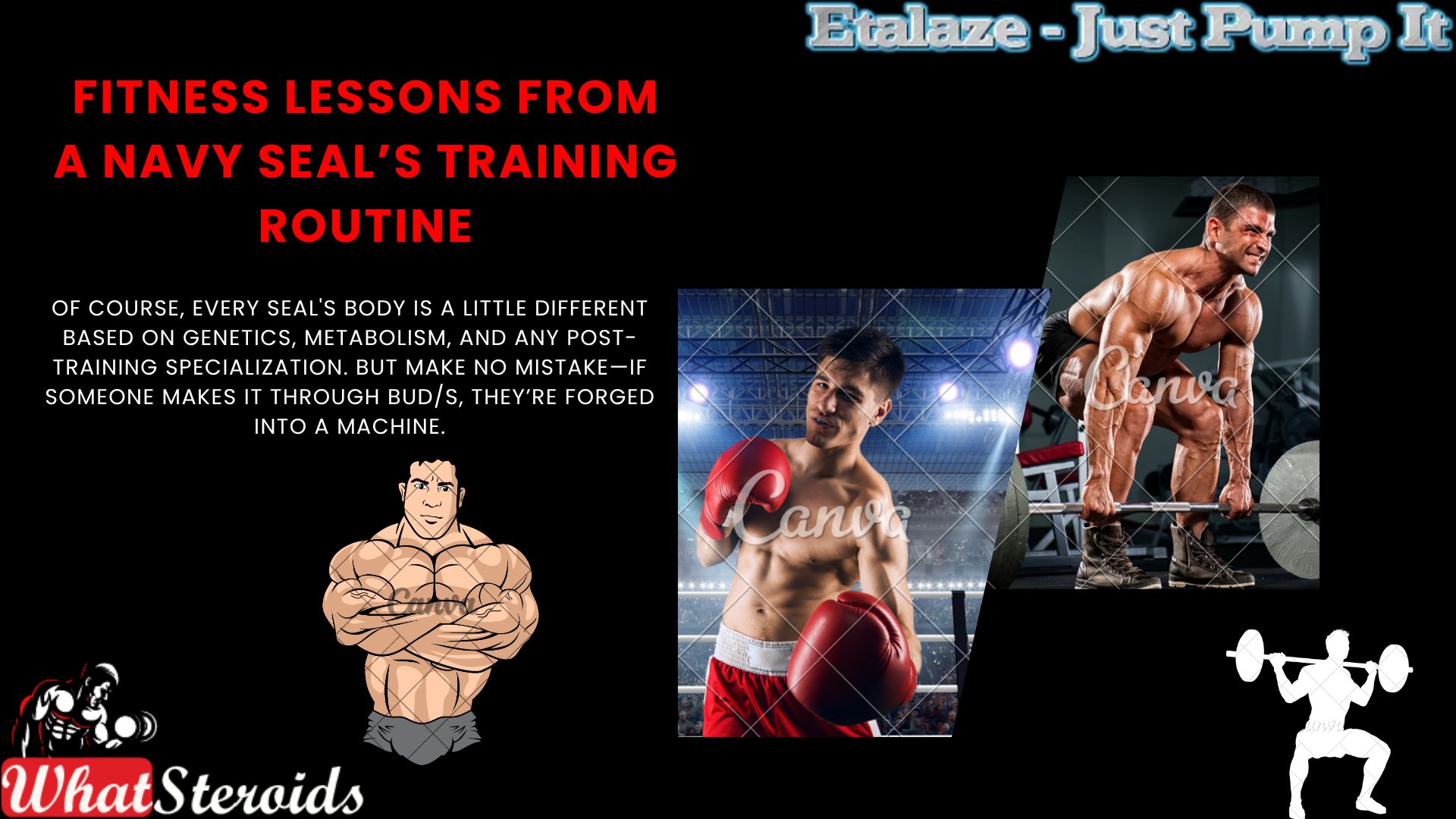
Navy SEAL training is designed to forge elite tactical athletes. It’s not your average gym program; it’s a brutal blend of strength, endurance, agility, and mental resilience training that sculpts a body to handle anything from long swims and ruck marches to hand-to-hand combat.
Physically, SEAL candidates go through:
- High-rep bodyweight training (push-ups, pull-ups, sit-ups)
- Running and rucking (often with weighted gear)
- Swimming and water confidence drills
- Weight training that builds functional strength, not just aesthetics
The result? SEALs tend to develop lean, muscular, and highly conditioned physiques. Not necessarily like bodybuilders—but more like Olympic decathletes: built for performance, with a low body fat percentage and exceptional cardiovascular fitness.
Of course, every SEAL's body is a little different based on genetics, metabolism, and any post-training specialization. But make no mistake—if someone makes it through BUD/S, they’re forged into a machine.
Click Here to Buy Ibutamoren MK677 by Biaxol
Weekly Navy SEAL Training Protocol (Pre-BUD/S Phase)
1. Cardiovascular Conditioning
2 Long Slow Distance (LSD) sessions: One run, one swim. These build aerobic endurance (e.g., 4–6 miles running, 1,000–2,000 meters swimming).
1 Long Interval session: Alternating fast-paced efforts with recovery (e.g., 4×800m run or swim intervals).
1 Short Interval session: High-intensity bursts (e.g., 10×100m sprints or swim sprints).
Must Read: A Proper Approach to Buying Steroids Online
2. Strength & Calisthenics
2 Full-body strength sessions: Focus on compound lifts (deadlifts, squats, presses) and injury prevention.
4–5 Calisthenics routines: High-rep push-ups, pull-ups, sit-ups, dips, flutter kicks—often circuit-style.
3. Core & Mobility
4–5 Core sessions: Planks, leg raises, Russian twists, and dynamic trunk work.
Daily flexibility/mobility work: Stretching, foam rolling, and joint prep to stay injury-free.
4. Water Confidence & Skills
2–3 swim sessions: Including side-stroke technique, underwater swims, and drown-proofing drills.
Treading water, buddy breathing, gear retrieval: Builds calm under pressure.
5. Mental Toughness & Recovery
Cold exposure, sleep deprivation drills, and team-based challenges: Simulate stress and build grit.
Active recovery days: Light cardio, yoga, or hiking to promote recovery without stagnation.
This structure is scalable—candidates ramp up intensity over 26 weeks to prepare for BUD/S. It’s not about looking jacked; it’s about being unbreakable.
Diet and Nutrition Framework
Navy SEALs follow a strategic, performance-driven diet that fuels their extreme physical and mental demands. It’s not a trendy meal plan—it’s a calculated system built around macronutrient balance, nutrient timing, and whole-food quality.
Here’s a breakdown of their typical daily and weekly dietary structure based on SEAL prep guides and military nutrition protocols2:
Daily Nutrition Framework
Calories: 3,000–3,500 kcal/day (adjusted for training intensity and body size)
Macronutrient Split
50% Carbohydrates – for sustained energy
30% Protein – for muscle repair and immune support
20% Fats – for hormone balance and long-term fuel
Meal Timing
Pre-workout: Complex carbs + moderate protein (e.g., oatmeal + eggs)
Post-workout: Fast-digesting carbs + lean protein (e.g., banana + whey shake)
Every 3–4 hours: Balanced meals to maintain energy and recovery.
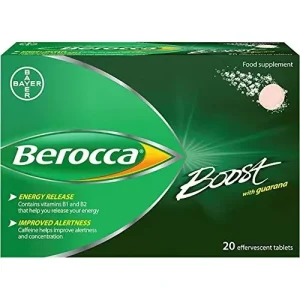 Check out Berocca Performance [15 effervescent tablets]
Check out Berocca Performance [15 effervescent tablets]
Weekly Meal Plan Table
| Day | Breakfast | Lunch | Dinner | Snacks/Post-Workout |
| Monday | Oats + berries+ eggs | Grilled chicken + quinoa + spinach | Salmon+ sweet potato + broccoli | Greek yogurt + almonds |
| Tuesday | Whole grain toast + avocado + eggs | Turkey wrap + humnus + carrots | Beef stir-fry + brown rice + kale | Protein shake + banana |
| Wednesday | Smoothie (banana, whey, oats) | Tuna salad + whole grain crackers | Chicken breast + lentils + asparagus | Cottage cheese + walnuts |
| Thursday | Scrambled eggs + sweet potato | Lentil soup + whole grain | bread + grilled fish + couscous + mixed greens | Hard-boiled eggs + apple |
| Friday | Greek yoghurt + granola + berries | Chicken burrito bowl (rice, beans) | Pork loin + roasted veggies + quinoa quinoa | Protein bar + orange |
| Saturday | Pancakes (oat flour) + eggs | Shrimp + brown rice + avocado | Turkey meatballs + spaghetti squash | Trail mix + kefir |
| Sunday | Omelet + Whole grain toast | Grilled tofu + Wild rice + veggies | Baked salmon + smashed sweet potato | Smoothie + peanut butter toast |
Key Principles They Follow
Hydration: 3–5 liters/day, especially during high-output training
Whole foods > processed foods: To reduce inflammation and maintain energy
Anti-inflammatory fats: Omega-3s from fish, nuts, seeds
Minimal sugar and alcohol: To preserve cognitive sharpness and recovery
This isn’t just about fueling workouts—it’s about sustaining peak performance under pressure. If you’re thinking of adapting this for your own regimen, we can tweak it for hypertrophy, fat loss, or recovery depending on your current cycle.
Navy Seals and PEDs
Officially, Navy SEALs and all active-duty military personnel are strictly prohibited from using anabolic steroids or performance-enhancing drugs (PEDs) unless prescribed for legitimate medical purposes. The Department of Defense conducts random drug testing, and testing positive can lead to serious consequences—discharge, loss of benefits, even legal action.
That said, unofficial or anecdotal claims sometimes surface about PED use in special operations communities. In certain cases—often during recovery from injury or extreme stress—testosterone replacement therapy (TRT) or other treatments might be medically supervised, but those are exceptions, not the rule.
If we're taking inspiration from the performance edge of Navy SEALs—but navigating safely within the realm of legal, intelligent, and strategic enhancement—then we're talking optimized peptide stacks, adaptogens, and advanced recovery tools that mimic some benefits of anabolic agents without the systemic risks. Here's your comprehensive overview:
I. Goal-Oriented Peptide and SARM Alternatives
These compounds support muscle retention, fat loss, recovery, and injury prevention, similar to what anabolic steroids promise—just with a smarter safety margin.
1. IGF-1 LR3
- Function: Mimics growth hormone effects; enhances muscle protein synthesis, satellite cell activation, and recovery.
- Stack Use: Often cycled 4–6 weeks; ideal with resistance training phases.
- Notable Edge: Boosts lean gains without androgenic sides.
2. BPC-157 (Body Protection Compound)
- Function: Accelerates tendon, ligament, and gut healing.
- Use Case: Injury rehab or proactive joint/tissue protection under high workload.
- Stack Suggestion: Pair with collagen peptides, taurine, or TB-500 for systemic support.
3. TB-500 (Thymosin Beta-4)
- Function: Enhances tissue regeneration, flexibility, blood flow.
- Use: Injured areas or systemic fatigue from overtraining.
- Best Timing: Post-cycle therapy or in high-impact training blocks.
4. CJC-1295 + Ipamorelin (GHRH + GHRP Stack)
- Function: Stimulates natural GH pulses—leading to improved sleep, recovery, and fat metabolism.
- Duration: 8–12 weeks, best taken nightly.
- Stacking Tip: Combine with IGF-1 LR3 or BPC for holistic recovery and body composition support.
5. MK-677 (Ibutamoren) – SARM Alternative
- Function: Oral GH secretagogue that boosts IGF-1/GH axis.
- Pros: Increases appetite, enhances sleep, and supports hypertrophy.
- Caution: Can promote mild insulin resistance if misused long-term—best used in cutting-edge recomp strategies.
6. Cardarine (GW-501516) – Fat Oxidation & Endurance
- Function: Boosts endurance and fat metabolism without muscle loss.
- Niche Use: Ideal for Navy SEAL-style training where stamina is paramount.
- Safety Insight: Not a SARM, though sometimes labeled as one—best used in short durations (4–6 weeks).
Explore: Tips on How to Store Peptides and HGH
II. Adaptogenic & Natural Edge Enhancers
Used by elite operators, athletes, and even astronauts.
Rhodiola Rosea
- Function: Reduces cortisol, enhances endurance and focus under stress.
Ashwagandha (KSM-66)
- Function: Increases testosterone naturally, improves strength and sleep.
Lion’s Mane + Cordyceps
- Function: Boosts neural plasticity (Lion’s Mane) and VO₂ max (Cordyceps).
III. Tactical Recovery Tools
Used heavily in high-impact professions to mimic PED-level recovery.
- Red Light Therapy: Muscle regeneration, collagen production, cognitive performance.
- Cold-Water Immersion (CWI): Reduces inflammation, boosts mitochondrial function.
- Electrostimulation Devices (like Compex): For active recovery and injury prevention.
- Sleep protocols + GABA precursors (Glycine, L-Theanine, Magnesium): Natural performance enhancers often overlooked.
Bonus: Smart Supplementation
- Creatine Monohydrate: Still king for strength, cognition, and recovery.
- Essential Amino Acids (EAA): Daily support for muscle repair, especially during calorie deficits.
- Omega-3 (DHA/EPA): Anti-inflammatory and cognitive protection.
Cycle Protocol for Maximum Gains
Phase I: Foundation & Recovery (Weeks 1–4)
Peptides:
Phase II: Tactical Mass & Stamina (Weeks 5–10)
Peptides/SARMs:
Phase III: Resilience & Recomp (Weeks 11–14)
Peptides:
Post-Cycle & Transition (Weeks 15–16)
Taper off all peptides
Overall
Navy SEAL bodybuilding is less about aesthetics and more about forging a physique that thrives under extreme physical and mental stress. Their training revolves around high-volume calisthenics, endurance runs, functional strength work, swim conditioning, and mental resilience drills—sculpting lean, powerful bodies built for performance, not posing. Nutritionally, SEALs rely on a high-calorie, whole-food diet emphasizing complex carbs, lean proteins, healthy fats, and rigorous hydration to fuel recovery and stamina. Meal timing supports performance and recovery, often incorporating nutrient-dense foods like oats, eggs, sweet potatoes, salmon, and greens—engineered to sustain peak output in any environment.
Related Article: Ultimate Guide to Primal Movements
Bodybuilding
Understanding Trenbolone-Induced Cough (“Tren Cough”)

Trenbolone, a potent anabolic steroid, can sometimes cause “tren cough”—a sudden and intense coughing episode shortly after injection. Although not exclusive to Trenbolone, it is more commonly associated with this substance due to its highly irritant nature.
 Click Here To Buy 1-Test Cyp 100 by Nakon Medical
Click Here To Buy 1-Test Cyp 100 by Nakon Medical
Mechanisms Behind Tren Cough
Solvent and Carrier Irritation
Trenbolone formulations often include volatile solvents like benzyl alcohol or benzyl benzoate, which may irritate lung tissues when absorbed quickly into systemic circulation.
Prostaglandin Release
Trenbolone promotes increased production of prostaglandins, particularly PGF2α. This compound triggers contraction in the smooth muscles of the lungs, leading to bronchoconstriction and coughing.
Micro-Oil Embolism
Tiny oil droplets from an injection can reach capillaries and travel to the lungs, causing mild embolic reactions that lead to temporary oxygen deprivation and coughing.
Histamine and Mast Cell Activation
For some individuals, Trenbolone triggers histamine release and mast cell activation, mimicking an allergic response and causing bronchospasms and cough reflexes.
Related Article: Best Syringes for Steroid Injection on Amazon
Using Salbutamol (Albuterol) to Manage Tren Cough
- Salbutamol, a widely-used β2-adrenergic receptor agonist, can alleviate tren cough symptoms by:
- Relaxing bronchial muscles, easing spasms that cause coughing.
- Inhibiting prostaglandin effects, reducing bronchoconstriction associated with PGF2α.
- Opening airways, preventing severe respiratory restrictions in susceptible individuals.
Application Methods
Inhaler (Optimal)
Take 1–2 puffs of salbutamol (100–200 mcg) 5–10 minutes before a Trenbolone injection. If coughing occurs afterward, additional puffs can swiftly resolve the issue.
Oral Tablets (Moderate)
Consuming 2–4 mg tablets 30–60 minutes before injection offers slower, longer-lasting relief but may be less effective than inhalation methods.
Nebulizer (Severe Cases)
For individuals with frequent episodes, nebulized doses of 2.5 mg salbutamol can provide substantial relief.
Preventive Measures to Reduce Tren Cough Risk
- Inject slowly to minimize systemic absorption and irritant effects.
- Split doses to lower reaction severity with smaller quantities.
- Opt for ventrogluteal injection sites, which have fewer blood vessels, reducing oil embolism risk.
- Choose lower-concentration solutions to lessen irritation, as higher concentrations (e.g., Tren Ace 200 mg/ml) are more likely to provoke reactions.
What Other Steroids Can Induce Coughing?
Here's a curated list of peptides, SARMs, and PEDs that may potentially cause coughing or respiratory irritation in bodybuilders and fitness enthusiasts:
Peptides
IGF-1 LR3 (Insulin-like Growth Factor): Known for its anabolic effects, IGF-1 LR3 can occasionally cause mild respiratory irritation due to systemic absorption.
TB-500 (Thymosin Beta-4): While rare, improper injection techniques or high doses may lead to transient coughing episodes.
GHRP-6 (Growth Hormone-Releasing Peptide): This peptide can stimulate histamine release, potentially leading to bronchospasms and coughing.
SARMs (Selective Androgen Receptor Modulators)
RAD-140: (Testolone) Some users report throat irritation or coughing, often attributed to solvents used in liquid formulations.
YK-11: Known for its myostatin-inhibiting properties, YK-11 may cause mild respiratory discomfort in sensitive individuals.
LGD-4033 (Ligandrol): Though uncommon, some users experience coughing due to carrier solvents or allergic-like reactions.
PEDs (Performance-Enhancing Drugs)
Boldenone Undecylenate (Equipoise): This injectable steroid can cause “Equipoise cough,” similar to tren cough, due to oil embolism or irritant solvents.
Testosterone Suspension: The water-based formulation may lead to coughing episodes if injected improperly or absorbed rapidly.
Nandrolone Decanoate (Deca-Durabolin): While less common, coughing can occur due to histamine release or systemic irritation.
More Tips to Minimize Coughing Risks
- Use proper injection techniques to avoid embolic reactions.
- Opt for lower-concentration solutions to reduce irritant effects.
- Consider antihistamines or bronchodilators for individuals prone to respiratory sensitivity.
Read More: Joint Stiffness: How to Manage It While on AAS
Are There Alternatives to Cough-inducing Steroids?
Here are some alternatives to cough-inducing steroids that can provide similar anabolic effects while minimizing respiratory irritation:
Peptides
IGF-1 LR3 (Insulin-like Growth Factor)
Promotes muscle growth and recovery without the irritant properties of certain steroids.
TB-500 (Thymosin Beta-4)
Enhances tissue repair and reduces inflammation, making it a safer option for recovery.
BPC-157 (Body Protection Compound)
Known for its healing properties, it supports muscle repair and joint health.
SARMs (Selective Androgen Receptor Modulators)
RAD-140 (Testolone)
Provides significant muscle-building effects with fewer systemic side effects compared to traditional steroids.
LGD-4033 (Ligandrol)
Boosts lean muscle mass and strength without the risk of respiratory irritation.
MK-677 (Ibutamoren)
Stimulates growth hormone release, aiding in muscle growth and recovery.
Natural Alternatives
Turkesterone
A plant-based ecdysteroid that supports muscle protein synthesis and recovery.
Ecdysterone
Another natural compound that mimics anabolic effects without the harsh side effects.
Creatine Monohydrate
Enhances strength and muscle mass through improved energy production during workouts.
Other Options
Human Growth Hormone (HGH)
Promotes muscle growth and fat loss, though it requires careful monitoring due to potential side effects.
Testosterone Boosters
Natural supplements like D-Aspartic Acid or Tribulus Terrestris can help optimize testosterone levels for muscle growth.
SARMs Alternatives
Legal and safer versions of SARMs are available, offering similar benefits without the risks associated with traditional SARMs.
Overall
We have explored the phenomenon of "tren cough," a sudden, intense coughing episode often caused by Trenbolone injections due to factors like solvent irritation, prostaglandin release, micro-oil embolism, or histamine activation. Preventive measures such as using salbutamol (via inhaler, oral tablets, or nebulizer), injecting slowly, splitting doses, and opting for lower-concentration solutions were highlighted.
Additionally, alternative compounds to tren cough-inducing steroids were discussed, including peptides like IGF-1 LR3 and TB-500, SARMs such as RAD-140 and LGD-4033, and natural options like Turkesterone, ecdysterone, and creatine. These alternatives provide anabolic effects while minimizing respiratory side effects. The conversation also underscored the importance of proper injection techniques and thoughtful compound selection to reduce risks.
-

 Bodybuilding Products1 year ago
Bodybuilding Products1 year agoTelmisartan In Bodybuilding: An Expert’s Advice
-

 Nutrition2 years ago
Nutrition2 years agoEverything Nutritional Food: What’s Too Much Or Too Little
-

 Anabolic Steroids12 months ago
Anabolic Steroids12 months agoJoint Stiffness: How to Manage It While on AAS
-

 Steroids1 year ago
Steroids1 year agoAnadrol Cycle: Benefits, Doses, Alternatives, etc.
-

 Bodybuilding10 months ago
Bodybuilding10 months agoPrimal Movements: Our Ultimate Guide for Maximum Results
-

 Bodybuilding2 years ago
Bodybuilding2 years agoChia Seeds in A Bodybuilder’s Diet: An Expert’s Advice
-

 Bodybuilding11 months ago
Bodybuilding11 months agoHow Effective is Bone Broth for Recovery?
-

 Steroids1 year ago
Steroids1 year agoOmnitope (Oxytocin)
-

 Steroids11 months ago
Steroids11 months agoSleeping Positions for Effective Muscle Recovery
-

 Bodybuilding1 year ago
Bodybuilding1 year agoHow Much Is Too Much Cardio? Understanding Heart Rate Zones
-

 Bodybuilding10 months ago
Bodybuilding10 months ago2nd Edition of Natural Bodybuilding Competition Facts
-

 Bodybuilding2 years ago
Bodybuilding2 years agoCalorie Dumping: A Bodybuilder’s Guide
-

 Bodybuilding11 months ago
Bodybuilding11 months agoAre Nootropics a Better Option to AAS?
-

 Bodybuilding1 year ago
Bodybuilding1 year agoDemystifying Hypertrophy Training
-

 Steroids6 months ago
Steroids6 months agoOstarine For Beginners: The Ultimate Guide
-
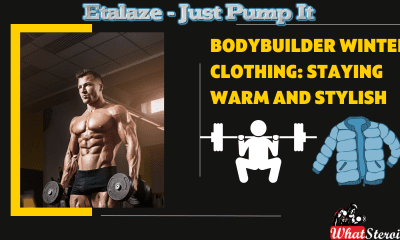
 Steroids8 months ago
Steroids8 months agoBodybuilder Winter Clothing: Staying Warm and Stylish
-

 Bodybuilding7 months ago
Bodybuilding7 months agoTop Video Games for Bodybuilders in 2025
-
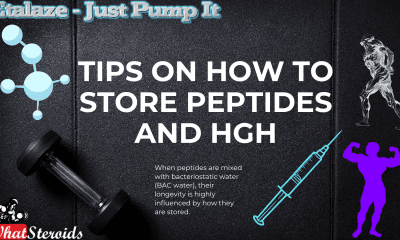
 Steroids6 months ago
Steroids6 months agoTips on How to Store Peptides and HGH
-
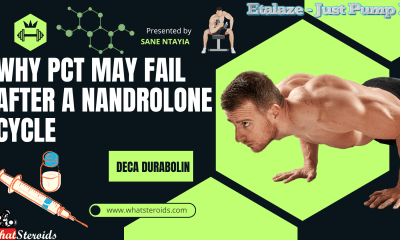
 Steroids5 months ago
Steroids5 months agoWhy Post-Cycle Therapy (PCT) Fails After a Nandrolone Cycle
-

 Beginners2 years ago
Beginners2 years agoTren Cycle for Beginners
-

 Anabolic Steroids2 years ago
Anabolic Steroids2 years agoLegality of Anabolic Steroids In Latin America
-
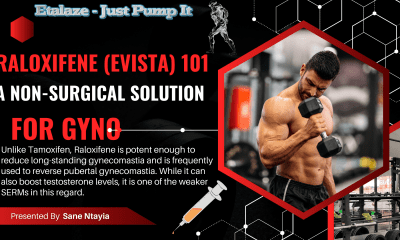
 Steroids4 months ago
Steroids4 months agoRaloxifene (Evista) 101: A Non-Surgical Solution for Gyno
-

 Beginners7 months ago
Beginners7 months ago14 Morning Run Safety Tips for Bodybuilding and Fitness
-
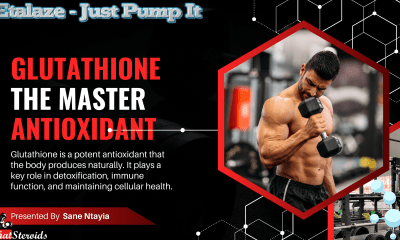
 Steroids7 months ago
Steroids7 months agoGlutathione – The Most Underrated Antioxidant
-
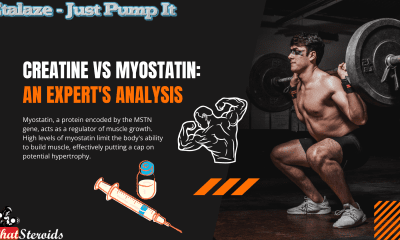
 Steroids4 months ago
Steroids4 months agoCreatine vs Myostatin: An Expert’s Analysis






